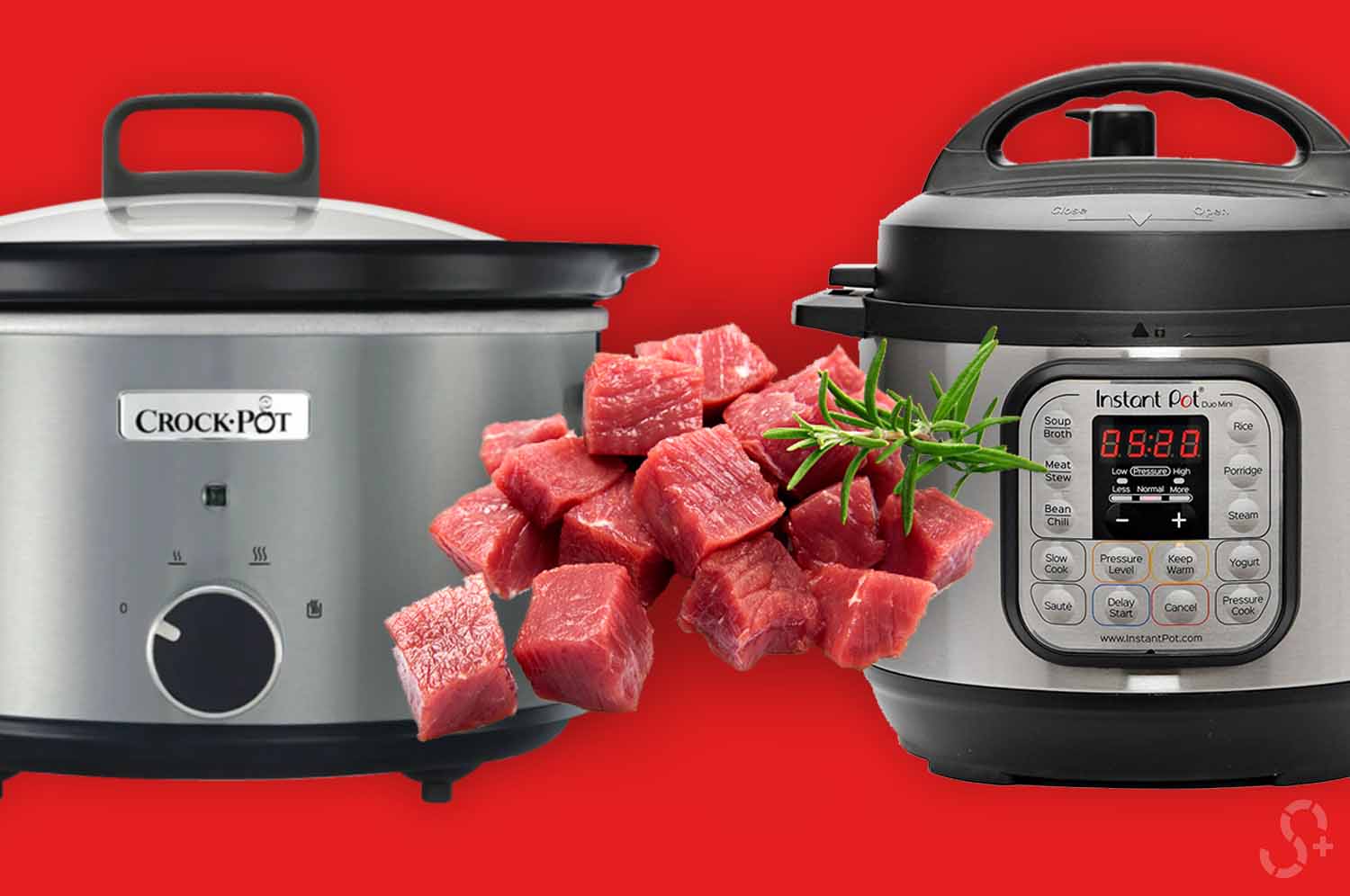There’s no doubt that pressure cookers are lifesavers – and by that, I mean lifesavers on days when you find yourself stuck doing overtime in the office, facing a long traffic jam on the drive home, and with absolutely no energy to prepare anything for dinner.
Now, I’m pretty sure we all love a good stew, especially with our favorite meats, like beef, lamb, or pork. But making a stew is an effort-intensive, time consuming process that traditionally uses the slow cooking method that can take anything from 6 hours to an entire day to prepare.
And here’s the best thing – you can use pressure cooking to finish off anything that you’ve started using another cooking method. So if you’re wondering if you can switch to pressure cooking after you’ve spent a few hours slowly cooking your goulash – yes, you can!
Here’s how you can do it, with some considerations to take note of.
How to pressure cook after slow cooking
If you’re looking to pressure cook your dish after you’ve spent some time slow cooking it, simply transfer your dish from the slow cooker into your pressure cooker, use the pressure cooker according to the instructions. Note that since you’ve already slow cooked your dish, all you’re doing is to finish it off in the pressure cooker to maintain the flavor while saving you a couple of hours or so of slow cooker time.
By finishing your food in a pressure cooker, and especially if you’re cooking meat, you’ll end up with some super tender cuts with a taste and texture that one could mistake for the result of intensive, slow cooking for the entire day.
However, to get the best results, you’re going to want to take into consideration how many hours your slow cooker has spent on the stovetop. Most slow cooker dishes take about 8 hours or so on average to finish cooking, so if you’re already slow cooking at the halfway mark, chances are you’re going to want to halve the amount of time it takes to transfer and cook in the pressure cooker according to your manufacturer’s instructions, as a rule of thumb.
The risk of overcooking in a pressure cooker is real, and if you don’t keep an eye on your pressure cooker as it finishes your slow cooked food, you might end up with a completely dried out dish with dry, chewy meat that is not tender, and ingredients that have lost their flavor or have completely broken down into mush.
What slow cooking does to your food
Slow cookers have been a mainstay in many a homeowner’s kitchen, due to the fact that it is literally a hands-off device. To operate a slow cooker, all you need to do is put your ingredients inside the slow cooker, place it on the stove, turn on the stove, and then wait for your stew or roast to finish cooking while you intermittently check on your food every hour or so.
The only issue is: slow cookers can be painfully slow. Especially if you’re serving a stew or a pot roast for a dinner party you’re hosting in the evening – you’ll more than likely have to start cooking from the early morning and only finish in the evening.
However, the upsides to slow cooking is that with all that time the individual ingredients spend together in the pot, marinating each other with the juices, aromas, and collagen (for meats) that they release, the flavors that you get in your dish at the end of the day are absolutely intense, delicious, and well worth the time and effort.
But wait, there’s an easier way to replicate this process, in less than half the time. Here’s where the pressure cooker comes in.
What pressure cooking does to your food
Pressure cookers create a super high-pressure environment inside the cooker. This high-pressure, made possible by the airtight lids and gaskets that can be operated by the user, ultimately increases the temperature of any liquid inside the pressure cooker to a much higher amount, even up to 40ºF higher than water’s boiling point of 250ºF.
Meats, vegetables, and other ingredients break down while they cook, releasing their flavors into the dish. Meats such as beef, pork, and lamb contain connective tissues called collagen, which melts away when cooked in the high pressure environment of the pressure cooker and turns into gelatin which mixes with the liquid in the pressure cooker
pot to add an intense, robust layer to the depth of flavor of your dish.
This increased pressure and temperature reduces the time needed to cook dishes like roasts, stews, broils, and many more. Pressure cooking can give you the most tender pieces of beef, pork, or lamb that literally falls off the bone at the touch of a fork or knife. This is compared to dry, chewy overcooked meat that is often a result of cooking methods such as searing, boiling, or frying.
Benefits of slow cooking and pressure cooking
Slow cooking before pressure cooking isn’t a groundbreaking invention – most people use this technique to create intense layers of flavor in their dishes that aren’t easily replicated with using just either one of the techniques.
And slow cooking has a lot of benefits as well. Research has shown that slow cooking captures nutrients such as vitamin C, and cancer-fighting compounds from veggies that you cook inside it. These nutrients go into the cooking liquids in the pot, ensuring that your dish is both nutritional and delicious.
The biggest benefit of pressure cooking, is pretty much the fact that it gives you all the benefits of a slow cooker, replicating a 6-8 hour long cooking process in just half an hour or less.
Conclusion
So if you want to pressure cook after slow cooking to save some time, by all means, yes, it is safe to. You can finish off your slow-cooked stew, roast, or broil in a pressure cooker for some amazing results.
Just be mindful of cooking times so that you don’t end up overcooking your food. Follow your manufacturer’s instructions and remember that you’re not cooking anything from scratch – you’re just finishing off your dish in the pressure cooker to save time.









